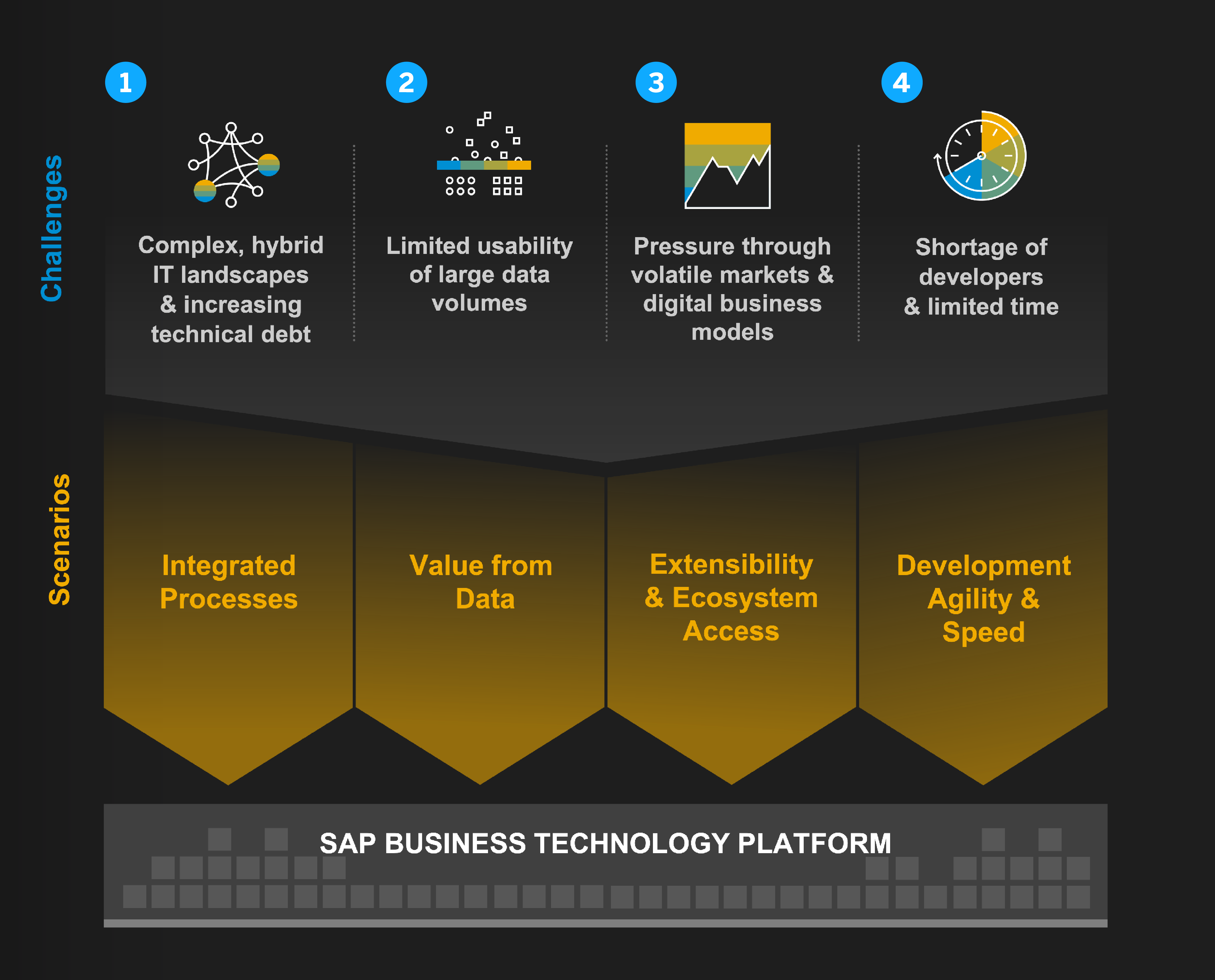It’s been a long time since developers have hand-coded everything from scratch. I remember being an IT systems engineer at the Hasso Plattner Institute in 2007 — things were very different than they are today.
Since then, the demand for professional developer talent has continued to grow faster than the world can educate them. In part to deal with this challenge, technology developers have increasingly composed software by working with libraries and the like, rather than rewriting the same code over and over. Working this way saves time and gives more agility.
Today, the latest progression of this trend can be found in the low–code and no–code (LCNC) solutions for application development, extensibility services, experience management, and end-to-end process automation.
COVID-19 is considered an accelerant for digital process automation — it is, of course — but the space was already rapidly developing. LCNC solutions that empower more employees to digitize and automate their work offer a pathway to greater enterprise resilience. The pandemic brings the benefits of such agility into stark contrast, further propelling adoption. Take robotic process automation (RPA) for example, where Gartner predicts “90% of large organizations globally will have adopted RPA in some form by 2022.”*
The goal of these technologies is to allocate human resources more intelligently and to empower the end user — the professional developer as well as the citizen developer — to focus on more valuable work while taking control of digitizing and automating their processes. LCNC is faster, more efficient, and frees up professional developer time for more complex activities, like security and big migration/integration projects. Most importantly, LCNC and automation technology build systemic resiliency and responsiveness into the daily functioning of a large organization, while fostering compliance and governance, with defined workflows and clear responsibilities.

As large companies aim to become more future-proof, they see LCNC and automation platforms as an immediate opportunity on the horizon. Gartner indicates that “by 2023, over 50% of medium to large enterprises will have adopted an LCAP as one of their strategic application platforms.”
Low-code application development platforms (LCAPs) mainly provide tools and services to easily set up and configure processes and workflows, whereas automation platforms enable companies to easily automate recurring manual work. This begins with the conversion of paper-based processes into digitized workflows then leads to the seamless combination of digital workers with human-led processes.
With decades of process knowledge across industries and lines of business, SAP is well-positioned to provide the expertise and tooling needed by our customers to advance automation with LCNC digital transformation.
We are firmly established with SAP Business Technology Platform (SAP BTP) and citizen automation products for Business Process Improvement such as SAP Workflow Management and SAP Intelligent RPA. And we have further extended our competitiveness with the recent acquisitions of Signavio and AppGyver.
Signavio strengthens SAP’s ability to keep the promise to support customers in their digital transformations by offering a holistic approach and technology in the business process intelligence space. Signavio enhances existing capabilities and allows us to provide standardized process KPIs, broad benchmarking data, process mining, customer journey mapping, user behavior mining, and customer experience analysis. We can give users a complete view of every business process and recommend how to solve identified issues and drive change efficiently.
AppGyver is a pioneering no-code development platform with a strong developer community that complements both SAP’s own as well as our partners’ offerings for citizen developers. The cloud-based builder for creating web and mobile apps is extremely simple yet immensely powerful; users can visually craft logic flows of any complexity, access native device capabilities, and connect to SAP data and services (and any additional third-party APIs) via OData and other REST API integrations.
Further to that, SAP has already been partnering with Mendix to offer a low-code development platform, streamlining and simplifying development for professional developers. Mendix and AppGyver enhance SAP BTP with full flexibility and capabilities that allow business users to build web and mobile applications, from low–code to no–code.
With these additions to our strong portfolio, SAP BTP is in a unique position to help many customers implement digital transformation for end-to-end process automation. For example, Murphy Oil Corporation was able to achieve significant productivity gains and improved forecast planning through different initiatives leveraging SAP Business Technology Platform, in particular SAP Workflow Management and SAP Intelligent RPA. Standardization resulted in better decision-making, and the use of more granular trend analysis resulted in a 25% reduction of G&A expenses.
Looking to the future, the landscape is changing but the demand for professional developers remains high and growing. Companies continue to evolve on their mission for greater speed and agility, with a particular eye on their citizen developers as the next major agents for expanding digital capabilities. The breadth of the SAP technology portfolio, our process knowledge across all lines of business, and the high-value data running through SAP systems translate into solutions for our users and measurable outcomes for our customers.
As we create a unified, business-centric, and open platform with a marketplace for the Intelligent Enterprise, customers, partners, and cloud users can count on SAP for future-proofed resilience.
Juergen Mueller is CTO and a member of the Executive Board of SAP SE.
This story previously appeared on SAP Community.



